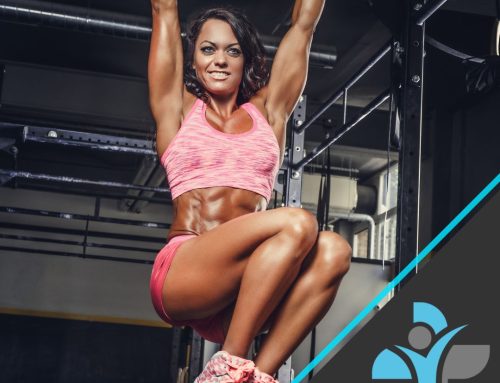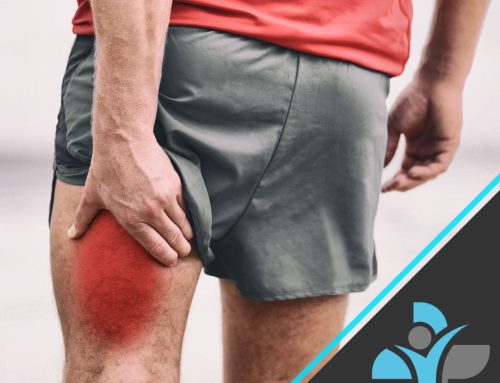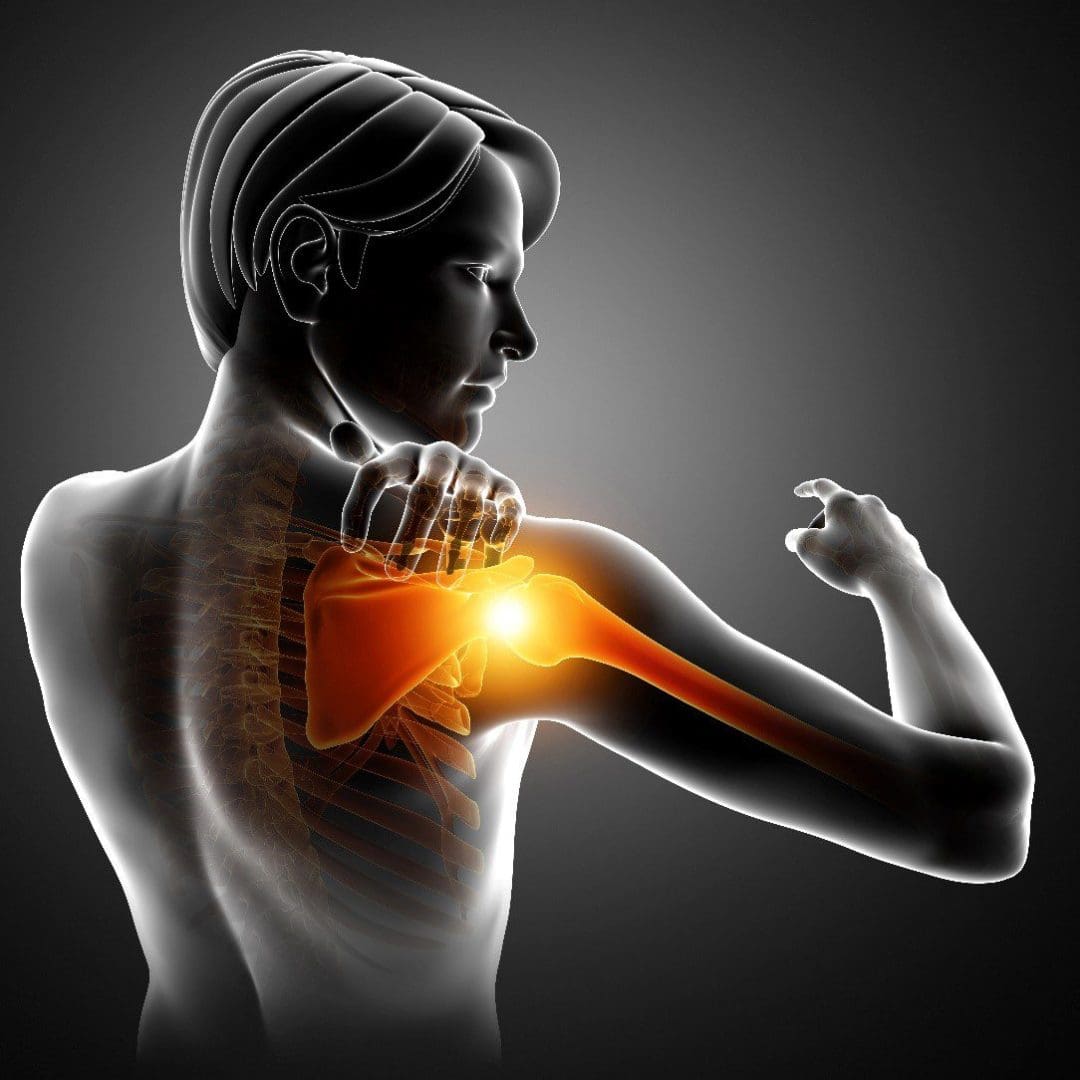
Overview
The AC (acromioclavicular) joint is where the shoulder blade (scapula) meets the collarbone (clavicle). The highest point of the shoulder blade is called the acromion. Strong tissues called ligaments connect the acromion to the collarbone, forming the AC joint.
Most AC Joint injuries are treated conservatively using various combinations of strengthening exercises, following the immobilisation phase, once pain permits. Surgery is usually reserved for cases where there is a complete dislocation of the AC Joint (Grade 3), or in cases where a less severe injury fails to respond adequately to conservative treatment.
Anatomy
The Acromioclavicular Joint, or AC Joint, is one of four joints that comprises the Shoulder complex. The AC Joint is formed by the junction of the lateral clavicle and the acromion process of the scapula and is a gliding, or plane style synovial joint. The AC Joint attaches the scapula to the clavicle and serves as the main articulation that suspends the upper extremity from the trunk.
The primary function of the AC Joint is:
To allow the scapula additional range of rotation on the thorax.
Allow for adjustments of the scapula (tipping and internal/external rotation) outside the initial plane of the scapula in order to follow the changing shape of the thorax as arm movement occurs.
The joint allows transmission of forces from the upper extremity to the clavicle.
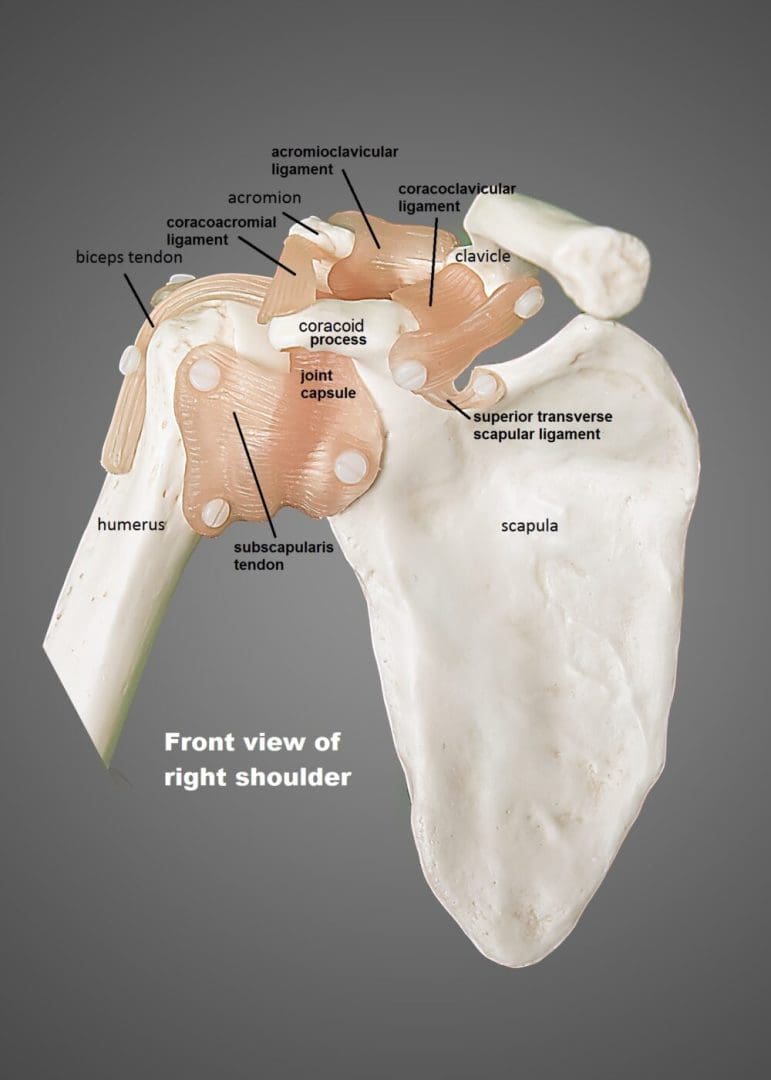
Symptoms
- Pain at the end of the collar bone.
- Pain may feel widespread throughout the shoulder until the initial pain resolves; following this, it is more likely to be a very specific site of pain over the joint itself.
- Swelling often occurs.
- Depending on the extent of the injury, a step-deformity may be visible. This is an obvious lump where the joint has been disrupted and is visible on more severe injuries.
- Pain on moving the shoulder, especially when trying to raise the arms above shoulder height.
Causes
An AC Joint injury often occurs as a result of a direct blow to the tip of the shoulder from, for example, an awkward fall, or impact with another person. This forces the Acromion Process downward, beneath the clavicle. Alternately, an AC Joint injury may result from an upward force to the long axis of the humerus (upper arm bone) such as a fall which directly impacts on the wrist of a straightened arm. Most typically, the shoulder is in an adducted (close to the body) and flexed (bent) position.
Diagnosis
Firstly, for the diagnosis of scapula winging your doctor will look at the shoulder blades for any clear obvious signs of winging. Some patient’s scapula bone may be more visible than others and have distinct scapula winging. The doctor may also ask you to perform arm/ shoulder movements to examine the range of movement and stability at the joint.
One of the main tests that are used to aid in the diagnosis of scapula winging is the serratus anterior test. This is where the patient is asked to face a wall, standing about two feet from the wall and then push against the wall with flat palms at waist level. This test is carried out to identify if any damage is done to the thoracic nerve causing the scapula to wing.
Treatment
The traditional literature supports non-operative treatment for grade I and II injuries. Patients with grade IV, V and VI injuries benefit from operative treatment, whereas the treatment of grade III injuries remains a controversial issue. 22 Numerous surgical procedures have been described, though there is currently no gold standard for the treatment of AC injuries. The main principle of surgical therapy is accurate reduction of the AC joint in both coronal and sagittal planes. This is achieved either by primary repair or by reconstruction of injured ligaments and maintaining stability to protect this repair or reconstruction. The traditional Weaver-Dunn CA ligament transfer procedure has largely fallen into disfavour today. If the AC joint injury presents within six weeks, it is considered acute. The main goal of treatment is acromioclavicular joint stabilization. Following techniques are used for stabilization and reduction of AC join
Exercises
- Initially, complete rest, immobilization and regular application of ice or cold therapy are important to reduce pain and inflammation.
- Mobility exercises can begin only once shoulder movement is pain-free. This will normally be 7-14 days for grades 1 and 2 sprains.
- Grade 3 injuries are more frequently treated conservatively, without surgery, but will require an even longer rest/healing period.
- If the shoulder has been immobilized for a period of time, then it may have lost mobility or range of motion.
- Pendulum exercises can begin as soon as the ligament has healed, and pain allows. Gently swing the arm forwards, backward, and sideways whilst lying on your front or bent over as seen opposite.
- Gradually increase the range of motion. Repeat this with your arm swinging from side to side as well. Aim to reach 90 degrees of motion in any direction.
- Front shoulder stretch
- External rotation stretch
- Isometric exercises – Strengthening should initially be isometric. This means contracting the muscles without movement.
- Resistance band exercises for AC joint sprain:
- Internal Rotation
- External Rotation
- Abduction/lateral raise
Prevention
- Wearing protective strapping to support a previously injured AC Joint, particularly in contact sports or sports where full elevation of the arm is not so important. Protective padding is also used in sports such as rugby.
- Warming up, stretching and cooling down.
- Participating in fitness programs to develop strength, balance, coordination and flexibility.
- Undertaking training prior to competition to ensure readiness to play.
- Gradually increasing the intensity and duration of training.
- Allowing adequate recovery time between workouts or training sessions.
